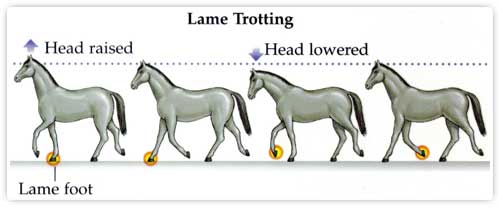
Poor performance and lameness in the sport horse
Proper identification, prevention and management of different injuries in sport horses requires a full understanding of what the sport demands and how injuries can occur. Furthermore, it is important to take note that horses of different athletic disposition may be more prone to injuries and perhaps do not have the capabilities to perform at a high level.
A good dressage horse combines balance, power and suppleness, while gymnastic exercises help to strengthen and stretch the muscles which can help avoid injury. Since dressage horses are consistently trained on artificial surfaces which provides cushioning, a low occurrence of many acute orthopaedic problems is seen in dressage horses as compared to other disciplines.
Show-jumping places great demands on the sport horse which needs to combine precision, accuracy and strength in the back and hind limbs. Jumping often occurs on different surfaces, such as sand or grass and therefore different shoeing. However, these different undergrounds alter the forces on the leg and foot. This can result in problems such as deep digital flexor tendonitis or tendosynovitis of the digital flexor tendon sheath.
Eventing includes both dressage, cross-country and jumping and therefore the horse not only needs an excellent athletic disposition but also endurance. In the different disciplines, the horse works on different undergrounds increasing the chance of injury, as well as most accidents occur in this discipline. Overall, good training and reacting quickly to problems reduces the risk to long term problems.
> Dyson, S. (2002). Journal of Equine Veterinary Science, 22(4), pp.145-150. All rights reserved to 2000 AAEP. Click here for the full-text article


